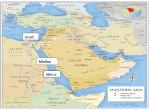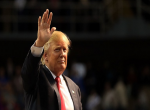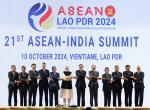Introduction
The changing geopolitical environment in the Indo-Pacific region in recent times has demanded reorientation of foreign policy priorities by many countries in the region. The single factor driving this new thrust is China’s threat of using force and intimidation of smaller and weaker nations in order to further its own national interests. Many Southeast Asian countries, Hong Kong and India have faced China’s wrath. Taiwan’s case is the most vulnerable. Despite Taiwan’s status as an independent entity and a vibrant functional democracy, China continues to consider the island nation as a break-way province and threatens to integrate into the mainland by threat of force, if necessary. Taiwan has lost a number of diplomatic allies, leaving it with only 15 diplomatic allies, while some switched allegiance lured either by Chinese doles or blackmail. But Taiwan has many friends, if not diplomatic allies, including the United States. This article makes a case why India should not feel shy to deepen its ties with Taiwan in all dimensions and should not feel constrained by Chinese sensitivities.
Background
On 1 April 1950, India became the first non-socialist country to establish relations with the People’s Republic of China and completed 70 years of diplomatic ties in 2020. When India and China experienced turbulence in the interim, India established India Taipei Association (ITA) in Taipei and Taiwan established Taipei Economic and Cultural Centre (TECC) in New Delhi in 1995. Both these two establishments in either country have been functioning as de facto embassies and successfully pursuing meaningful economic, political and cultural relations, thereby fostering trade and investment ties and also expanding people-to-people contacts by a host of areas. In particular, India’s economic interaction with Taiwan has gained traction with several bilateral agreements in agriculture, investments, heritage railways, civil aviation, Double Tax Avoidance Agreement (DTAA), industrial cooperation, Small & Medium Enterprises (SME) cooperation and customs cooperation, among others. According to a December 2019 survey conducted by National Chengchi University’s Election Study Centre, 53.8 % of Taiwanese people polled overall supported “increasing ties with India”, with 73 % of Democratic Progressive Party (DPP) voters supporting increasing ties with India and 44.6% of KMT (Nationalist Party of China) voters supporting increasing ties.
In May 2020, two members of the Indian Parliament virtually attended the newly elected President Tsai Ing-wen’s swearing in ceremony and praised Taiwanese democracy, thereby sending a message to China and signalling that India is keen to strengthen ties with Taiwan.1 A further step forward in this direction was in July 2020 when India announced the appointment of a Joint Secretary level diplomat, Gourangalal Das, as its new envoy to Taiwan, implying thereby that India has upgraded diplomatic ties.2
Economic Ties
Trade and investment relationships have made progress as reflected in the increasing bilateral trade figures. The main sectors that have contributed to this trade growth in trade and investment are information technology, energy, telecommunications and electronics. India’s trade with Taiwan in 2008 registered a total of $5.34 billion, an increase of 9.5 % from the previous year. Total bilateral trade in 2007 rose by 80 % and reached $4.8 billion but India’s exports to Taiwan declined to touch $2.33 billion as against imports from Taiwan of $2.53 billion. But in the following year Taiwan’s exports to India grew at a rate of 28.41 % to reach $3 billion. As a result India faced a trade deficit of $669 million with Taiwan, as against a trade surplus of $159 million in 2007. The major items in India’s export basket to Taiwan include waste oil, naphtha, cereals, and cotton, organic chemicals, and copper, aluminium and food residues.
Between 2008 and 2019, bilateral total trade made incremental growth with a total of $7.2 billion in 2019. Major Taiwanese exports to India include integrated circuits, machinery and other electronic products. India is also keen to attract Taiwanese investment particularly in hi-tech and labour-intensive industries. More than 80 Taiwanese companies and entities currently have a presence in India.3 Though in 2018 India and Taiwan signed an updated bilateral investment agreement to expand economic ties, India is still hesitant to launch talks with Taiwan for a trade deal contrary to speculation in the Indian media. Even Taiwanese investment in India has been affected by cultural and linguistic barriers and reticence on part of Taiwanese businesses.
If India is sensitive to the Chinese concerns thinking that a trade deal would invite sharp reaction from China, it is time for India to revisit such a stance. If India agreed to invite Australia to join the Malabar by shedding the previous hesitation, thereby giving the Quad a greater strategic heft, not formalising trade ties with Taiwan makes no strategic sense. It would make sense for India to continue its present Taiwan policy in deference to China’s sensitivity if it is on reciprocal basis. Regrettably it is not the case. China continues to stress that New Delhi should abide by the “One China” policy.4
World support for China and its policies is already on the wane. From the manner it handled the outbreak of the coronavirus virus to the policies towards regional issues it has no takers as all of its actions are suspect. The invitation of Australia to join the Malabar naval exercises, the deepening of ties by Japan with the ASEAN grouping, the expanding Indo-US ties as demonstrated by the most recent signing of the Basic Exchange and Cooperation Agreement for Geo-Spatial Cooperation (BECA) during the 2+2 ministerial dialogue between India and the US in New Delhi and many more are clear fallout of garnering world support to check China’s aggressive posture on regional and world issues. Seen in the prism of this narrative, it makes logical sense that India needs to shed its reluctance and embrace Taiwan into its fold with a warm hug without bothering about as to how China reacts.
Global Support
Global support for Taiwan is swinging in its favour as a reaction to Beijing’s continuous reminder to the world that Taiwan is a break-away province, accompanied by threat of use of force, if necessary, and if Taiwan ever dares to declare formal independence. Beijing does not realise how the world will react heavily if it ever crosses the red line. Overlooking the consequences could be perilous for China itself as for the World.
There seems to be overwhelming consensus among the people and the media in India that India must stand by Taiwan by all means in defending the larger cause of democracy. Despite that the US is unlikely to abandon Taiwan as it is bound by treaty obligations should Beijing decides to cross the red line and with full knowledge of its own vulnerability of eminent threat of China, Taiwanese President Tsai is increasingly asserting an independent identity despite the population’s mostly Chinese roots. By importing advanced sophisticated arms from the US, Taiwan is also strengthening its military capability and preparing itself to defend its territory if necessary. As a vibrant functioning democracy, Taiwan is committed to protect its democratic freedom and enjoy the benefits of its high economic growth.
India has its own problems with China and is cautious not to get embroiled in another conflict where it might not be a direct party. Its cautious approach on a trade deal could stem from this consideration at least for now. There has been no resolution on the recent border standoff in eastern Ladakh with the Chinese military. For the present, India is reluctant to move ahead on a trade deal with Taiwan as such a decision would draw Chinese ire and the matter could get further messy once any such pact is registered at the World Trade Organisation. For the present, India would prefer multilateral approach such as with the Quad members to take a position on the Taiwan issue rather than taking any unilateral measures. This does not mean that the situation would not change if a new situation would demand an appropriate response.
On the other hand President Donald Trump has been pursuing a tough approach with China on trade issues. The problem further assumed a larger dimension after the coronavirus originated in the Chinese city of Wuhan and mishandled by China, leading Trump to push countries for international support against Chinese unilateralism and vowing to make China pay for the virus. The US has also dispatched warships in the Taiwan Straits to deter Chinese warships that frequently intrude into the Taiwanese waters. China’s warnings to the US not to come closer to the Taiwan Straits have little effect on Trump. During the 2+2 ministerial dialogue in New Delhi on 27 October, Secretary of State Mike Pompeo used strong words by mentioning Chinese “tyranny” that needs to be checked.
India’s Position
Given that Trump administration has raised the tempo against Chinese unilateralism coinciding with deteriorating India-China ties, India repositioning itself on the Taiwan issue might not be unthinkable. India could gather added confidence from the Quad, now that the Quad has assumed greater heft in the maritime domain as demonstrated from Australia joining the Malabar naval exercises in November 2020.
When the news surfaced that India was pursuing a trade deal with Taiwan, China was quick to remind India that it must abide by the ‘One China’ principle as it sees Taiwan as a part of China. Indian media reacted strongly against such an advice from a country that has shown scant regard for the sovereign interests of other countries. The Times of India in an editorial lambasted: “China has no business telling India with whom it can do trade deals. The reality is Taiwan is today a free and independent democracy, and an Asian economic dynamo.”5 The editorial further argued that “Taiwan is a powerhouse in the semiconductors that serve as the backbone of today’s modern economies. Taiwanese companies are well-integrated into global supply chains, bringing high standards of production and logistics to her table.”
Like the Japanese and South Korean companies trying to relocate their production bases from China following the breakout of the coronavirus, many Taiwanese companies are also looking for other overseas destination to relocate. India just fits into the Taiwanese thinking process and therefore expects India to open the doors for Taiwanese companies to set up businesses. China must not stand on Taiwan’s way to do business with India. Taiwan is higher up in value chain and tapping Taiwan’s investments in technology can kick-start a tech manufacturing revolution in India. In view of the potential win-win situation, India has legitimate right to ignore China’s objections. Such an approach shall also compliment Taiwan’s New Southbound policy.
Earlier in October, when the Taiwanese representative office in New Delhi issued advertisements in a couple of leading newspapers in India carrying Tsai’s photo ahead of Taiwan’s National Day on 10 October, the Chinese embassy in New Delhi issued guidelines and sought to “remind” the Indian media that there was only one China in the world, and that the government of the People’s Republic of China is the “sole legitimate government representing the whole of China. The embassy letter drew a sharp response from the MEA that “there is a free media in India that reports on issues as it sees fit”. In her national day speech, Tsai also mentioned India’s friction with China and thanked “friends in Indian” for sending greetings,6 besides issuing a number of tweets to showcase her affinity with India, with photographs of her visit to the Taj Mahal and love for Indian food. Both sides should exploit such warmth for their mutual benefits.
Taiwan was one of the first to offer India key medical equipment during the pandemic. Taiwan’s economic, technological, and medical advantages serve as catalysts to India. India has therefore sought to woo Taiwanese semiconductor companies while maintaining a subterranean relationship through their representative office in either country. India hopes that Taiwan can assist in semi-conductor manufacture. This is vital to loosen China’s grips on India’s electronics and telecom sectors.
In order to correct the trade imbalance and reduce dependence on a host of imports from China,7 and as a retaliatory measure to punish Beijing because of its intrusion into the Indian territory in Ladakh, India has imposed a lot of restrictions on the import of Chinese products, including the ban on Chinese apps and its exclusion of Huawei from its 5G network over security fears. This could open door for Taiwan to further deepen its presence in the Indian telecoms industry. India need not bother about Chinese objections and despite not having formal diplomatic ties, need to deepen commercial ties, facilitate business, tourism and cultural exchanges. It is encouraging that the Centre gave approval recently to Taiwanese firms such as Foxconn Technology Group, Wistron Corp, and Pegatron Corp as the government looks to attract investment worth more than $143 billion for smartphone production over the next five years.8
Some of those in India who advocate deepening ties with Taiwan call India-Taiwan relations as “Milk-Tea Alliance”,9 following Tsai’s admiration recently of Indian cuisine. Reflecting the public mood, even researchers and academics in leading think tanks and universities have engaged in the study of India-Taiwan relations informing the public of the merit of deepening India-Taiwan tie as well as to influence policy makers.10 There is also a view that India’s present policy to play the ‘Taiwan card’ to balance and challenge China could change once India-China relations stabilizes and India might dilute the Taiwan issue. That is a minority view and would not hold good as China is unlikely to change its behaviour anytime soon and India does not abandon its time-tested friends.
Endnotes
- Ananath Krishnan, “BJP MPs praise Taiwan as ‘democratic country’ as President Tsai Ing-wen begins new term”, The Hindu, 20 May 2020, https://www.thehindu.com/news/national/bjp-mps-praise-taiwan-as-democratic-country-as-president-tsai-ing-wen-begins-new-term/article31635242.ece
- https://indianexpress.com/article/india/india-posting-key-diplomat-to-taiwan-amid-china-tension-6501447/
- “For now, India has no plans to launch trade talks with Taiwan”, The Economic Times, 22 October 2020, https://economictimes.indiatimes.com/news/economy/foreign-trade/india-has-no-plans-to-launch-dialogue-on-trade-deal-with-taiwan/articleshow/78795382.cms
- “India, Taiwan consider trade deal; Beijing asks New Delhi to respect ‘One China policy’”, Firstpost, 21 October 2020, https://in.news.yahoo.com/india-taiwan-consider-trade-deal-154109939.html
- “Plug into Taiwan”, Times of India, editorial, 22 October 2020.
- “Eye on China, Taiwan thanks ‘friends in India’”, Times of India, 12 October 2020, https://timesofindia.indiatimes.com/india/eye-on-china-taiwan-thanks-friends-in-india/articleshow/78610960.cms
- Timothy S. Rich, Andi Dahmer, Madelynn Einhorn, and Vasabjit Banerjee, “Taiwan’s Relations with India: Partisan Divides”, 25 January 2020, https://thediplomat.com/2020/01/taiwans-relations-with-india-partisan-divides/
- Archana Chaudhury and Chris Horton, “India Considers Trade Talks with Taiwan as both spar with China”, 20 October 2020, https://www.bloomberg.com/news/articles/2020-10-20/india-considers-trade-talks-with-taiwan-as-both-spar-with-china?srnd=politics-vp; https://in.news.yahoo.com/india-taiwan-consider-trade-deal-154109939.html
- Jassie Hsi Cheng, “The Taiwan-India ‘Milk Tea Alliance’”, 20 October 2020, https://thediplomat.com/2020/10/the-taiwan-india-milk-tea-alliance/
- See for example, Prashant Kumar Singh and Sana Hashmi, “Taiwan-India Relations during COVID-19”, CSSAME Viewpoints, October 2020, Issue No. 1, https://cssame.nchu.edu.tw/2020/10/26/taiwan-india-relations-during-covid-19/
(The paper is the author’s individual scholastic articulation. The author certifies that the article/paper is original in content, unpublished and it has not been submitted for publication/web upload elsewhere, and that the facts and figures quoted are duly referenced, as needed, and are believed to be correct). (The paper does not necessarily represent the organisational stance... More >>
Image Source: https://tnimage.s3.hicloud.net.tw/photos/2020/06/24/1592988688-5ef3141001464.jpg





.jpg)





Post new comment